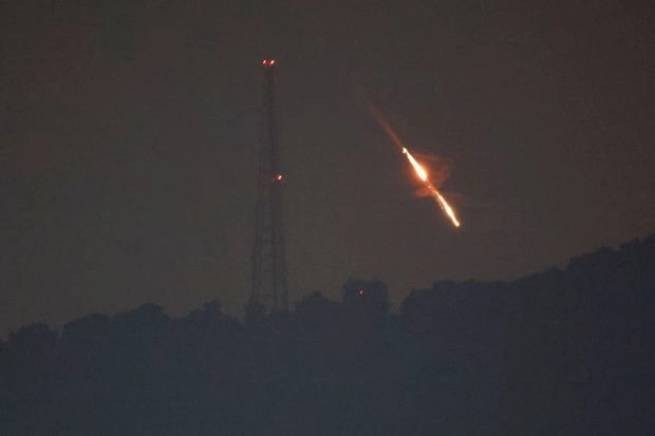Now that the national health system is in dramatic shape due to the large number of infections, as Greece is at the peak of the third wave of the pandemic, 4,309 new infections have been announced today.
Indian strain of coronavirus carrying two mutations, discovered from a man living in the San Francisco Bay Area. Experts clarified that at least 7 more people can be carriers of this option, they are under control, according to the San Francisco Chronicle.
The number of Covid-19 patients fighting for their lives in hospitals remains high. According to EODY, 751 people have been intubated in intensive care units, and 79 people have died from the coronavirus in the last 24 hours.
As a reminder, the maximum number of cases reported by EODY was announced on March 30, 2021, when 4,340 cases were identified in 24 hours. The highest number of deaths from the virus in 24 hours was recorded on November 28, 2020, when 121 patients died.
Since mutations of the coronavirus are constantly being discovered, especially in the British strain, which has increased transmission and, according to experts, has infected many families, we should not expect a decrease in the rates in the coming days.
Scientists and government concerns are focused on hospitals, as intensive care units in Attica and other parts of the country are 99% full. A similar problem exists with conventional locations in coronavirus wards, where the number of free beds is minimal.
Sources say there is panic at the Ministry of Health, and Megaro Maximu (prime minister’s residence) is urgently looking (or pretending, editor’s note) for ways to stop the pandemic’s frenzied march after the weakening made last weekend, when thousands of citizens thronged in bars and cafes. in parks and squares, as if there was no virus.
Will easing by Easter be slowed down?
And this whole situation at a time when non-food stores opened their doors to the public, and scientists hope that the measures will be carefully followed so as not to affect the spread of the virus. As if that weren’t enough, discussions began about how we would celebrate Easter this year. However, a member of the expert commission told reporters that “if the epidemiological picture does not change, there will be no relief on Easter.”
According to Alcibiades Vatopoulos, professor of microbiology and member of the expert commission of the Ministry of Health, the answer to the question of whether we will go to the village for Easter depends on where the village is located. “Perhaps we can travel within the Attica prefecture. I’m somehow afraid to predict what will happen if such travel is allowed. We’ll see,” he said to Sky.
However, the epidemiological data, which will appear by Thursday evening, will become the indicator on the basis of which experts will make their decisions on Friday.
Exadaktylos: “Opening primary and secondary schools is very dangerous”
Athanasios Exadaktylos, president of the Panhellenic Medical Association and a member of the committee on infectious diseases, called the opening of primary and secondary schools before Easter “very dangerous.” As for the lyceums, he stressed that the commission had not yet discussed and decided whether they would be open, and added that a meeting on this issue would probably take place on Wednesday or Friday.
Pavlakis: one of the worst pandemic moments in the country
Meanwhile, physician and researcher Georgios Pavlakis told ANT1 about one of the worst moments of the pandemic in the country, noting that we are at the height of an epidemiological wave.
He stressed that “there is panic leading to wrong decisions, such as opening operations at such a critical period,” and welcomed the committee’s proposal not to open retail in high epidemiological burden areas such as Thessaloniki, Achaia and Kozani. He also stated that “if we start to mitigate measures now, we will have a peak in deaths during Holy Week, as the number of cases will continue to grow.”
The hospitals of Attica, Thessaloniki and Achaia are in the most difficult situation. In hospitals in all three prefectures, EKAB-KEPY is installing new beds in coronavirus wards every day, as well as connecting new beds in intensive care units, which, however, are immediately filled.
Crisis in Thessaloniki
The situation in Thessaloniki has become increasingly difficult over time as the number of coronavirus patients in hospitals increases. “Last November we were on the brink of despair, but now the situation is even worse and it is getting worse every day.” Speaking on the radio station of the Athens-Macedonian News Agency, Mr. Pavlakis noted that the fact that doctors manage to “pull patients out of the afterlife”, but “the beds are occupied again after a short time.”
The situation is difficult in Patras too.
The situation in Achaia is also extremely difficult: the hospitals that have been allocated for patients with coronavirus are overcrowded, which is why many patients are being treated at the University Hospital of Patras and at Agios Andreas, and the number of intubated patients is high.
“New laboratory confirmed cases of the disease, registered in the last 24 hours, amount to 4309 infected, of which 30 were detected after checks upon entry into the country. The total number of cases is 281 570 (daily change + 1.6%), of which 51.4% are men. Based on confirmed cases in the last 7 days, 94 are considered to be related to travel from abroad and 2773 to a known case.
The new death toll is 79, and a total of 8,532 deaths have been reported since the start of the epidemic. 95.7% had an underlying disease and / or were 70 years of age or older.
The number of patients treated with intubation was 751 people (64.6% of men). Their average age is 68.
84.0% have an underlying disease and / or are 70 years of age or older. Since the start of the pandemic, 1,788 patients have been discharged from intensive care units. 526 new patients with Covid-19 admitted to hospitals (daily shift + 20.09%).
The average number of hospitalized patients within seven days is 511. The average age of patients is 44 years (from 0.2 to 105 years), and the average age of the deceased is 79 years (from 0.2 to 103 years).
Geographic distribution of cases:
A total of 1,883 infected were found in Attica, 622 in Thessaloniki, 135 in Achaia, 108 in Larissa, 98 in Kozani and 90 in Pella.
In Attica, cases are distributed as follows:
East Attica: 269 North Athens: 208 West Attica: 144 West Athens: 289 Central Athens: 486 Islands: 15 South Athens: 176 Piraeus: 296
Number of tests: From January 1, 2020 to date, in laboratories performing tests for the novel coronavirus (SARS-CoV-2) and systematically reporting the total number of controlled samples, a total of 4,266,887 clinical samples were tested, while 2 556,149 samples tested by Health Departments and EODY departments that conduct Rapid Ag tests. The average number of tests over seven days is 49,032.
Situation in the world: 4th wave announced in the USA, new Indian mutation discovered
On April 6, at 19:00 (Athens time), 132 655 842 (+478 880) infected people were registered in the world, 2 877 753 (+7 404) people died, 106 940 882 (+498 407) recovered.
The worst indicators with an increase in the number of infected are now in India, where +96 557 new cases were registered over the past day. The largest number of new deaths was noted in Brazil, +1623.
Indian strain of coronavirus carrying two mutations, discovered from a man living in the San Francisco Bay Area. Experts clarified that at least 7 more people can be carriers of this option, they are under control, according to the San Francisco Chronicle.
NBC Bay Area TV suggests that this is the first case of an Indian strain with a double mutation on record in the United States. Therefore, it is not yet entirely clear whether it is more dangerous, how quickly it spreads and whether it is possible to avoid infection with the help of vaccines available today.
The case of infection, according to RIA Novosti, was officially confirmed by the Stanford Laboratory of Clinical Virology. Its leader, Benjamin Pinski, also confirmed the verification of seven more suspicious cases, the results of which will become known in a few days.
NBC Bay Area TV suggests that this is the first case of an Indian strain with a double mutation on record in the United States. Therefore, it is not yet entirely clear whether it is more dangerous, how quickly it spreads and whether it is possible to avoid infection with the help of vaccines available today.
The case of infection, according to RIA Novosti, was officially confirmed by the Stanford Laboratory of Clinical Virology. Its leader, Benjamin Pinski, also confirmed the verification of seven more suspicious cases, the results of which will become known in a few days.






More Stories
Shocking report from Japanese scientists: “Cancer deaths increase sharply after mass Covid vaccination”
Study: Scientists have discovered why children are more susceptible to coronavirus
22 arrests and confiscations took place in Italy and other EU countries in the case of "covid" EU funds (video)